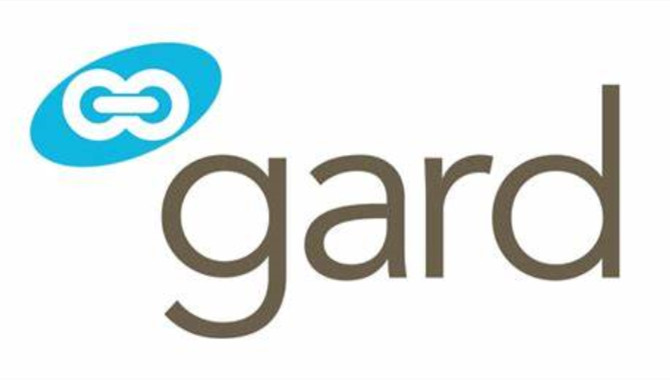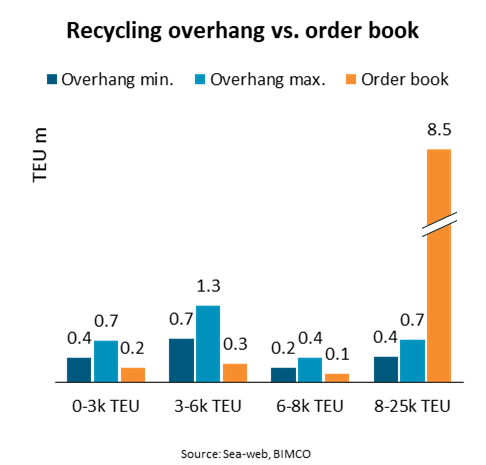
2023 ushers in a new era for the shipping industry with the introduction of the carbon intensity regulations. These are just some of the many regulations that enter into force this year.
Below, we look at a number of the more important domestic and international regulations that enter into force in 2023. We encourage Members and clients to ensure that their crew and shore staff are familiar with them prior to their entry into force.
1 January 2023
·Carbon intensity regulations: The energy efficiency index for existing ships (EEXI) and the Carbon intensity indicator (CII)
·EEXI: This is related to the technical design of the ship and is a one off certification. It indicates the vessel’s energy efficiency compared to the baseline. For ships delivered before 1 January 2023, EEXI verification must take place by the first annual, intermediate or renewal survey of the International Air Pollution Certificate (IAPP Certificate), whichever is the first such survey, on or after 1 January 2023. For ships delivered on or after 1 January 2023, it will be the first survey of the International Energy Efficiency Certificate (IEE Certificate). All vessels will need to have an EEXI technical file onboard.
·CII: This is aimed at continuous improvement of a ship’s operational carbon intensity and, depending on vessel type, uses the vessel’s deadweight or gross tonnage in the denominator as opposed to the actual cargo carried, as set out in the simplified formula below.
The actual operational CII achieved by the vessel during a calendar year, starting in 2023, will need to be documented and verified by the flag or their recognised organization, i.e. classification societies. Every vessel will then be given a carbon intensity rating, ranging from A to E. This will be recorded on the statement of compliance issued by Classification Society. The carbon intensity limits are being reduced each year until 2026. Vessels subject to CII regulations must develop a ship specific SEEMP Part III to include things such as, ‘CII calculation methodology’, ‘Required CII values until 2026’, ‘implementation plan for achieving the required CII’, and ‘procedures for self-evaluation & improvement’.
EEXI and CII regulations are relevant for both owners and charterers. Unlike many other regulations, which usually fall within the owner’s sphere of responsibility, the carbon intensity regulations, particularly the CII, are very much relevant for charterers too as they have a major role in ensuring that the vessel achieves a good CII rating. Charterparties will have to be amended to cater for these new regulations.
·Resolution MEPC.331(76): Amendments to the International Convention on the Control of Harmful Anti-fouling Systems on ships
·At MEPC 76, IMO adopted the amendments to the AFS Convention whereby cybutryne (CAS No. 28159-98-0) has been added to the list of prohibited substances alongside already prohibited organotin compounds. These act as biocides in anti-fouling coatings. Ships will have to comply by the first anti-fouling renewal survey after 1 January 2023 but no later than 60 months after the last application of the cybutryne-based anti-fouling system. Vessels with pre-existing anti-fouling systems that contain cybutryne must remove the anti-fouling system or apply a coating to prevent the leaching of cybutryne. A new International AFS certificate must be issued to indicate that the anti-fouling systems are cybutryne-free. Owners may need to contact the paint manufacturers to obtain cybutryne-free statements which can be used for AFS certification.
·Resolution MSC.487(103): Amendments to STCW Code
·The amendment relates to Electro-technical officers (ETO). In the past, the operational level did not include ETOs although the standards of competence for ETOs were provided at operational level. The definition of operational level has been amended to clarify that ETOs are responsible at the operational level.
·Resolution MSC.483(103): International Code on the Enhanced Programme of Inspections during Surveys of Bulk Carriers and Oil Tankers
·Under the amendments to the ESP Code, only ‘ suspect areas’ of double hull oil tankers will be subject to thickness measurements during the first renewal survey.
·New mandatory ‘at berth’ requirements by the California Air Resources Board (CARB)
·Although the regulations took effect in 2021, the emissions control will be phased in from 1 January 2023 onwards forcontainer vessels, refrigerated cargo vessels, and cruise (passenger) vessels. For other ship types, the compliance date will be laterHowever, regardless of vessel type, all ocean going vessels visiting California will be subject to reporting requirements. For further information please see the following: .
·Prepare for tougher at-berth emissions reductions in California
·At berth FAQ prepared by CARB
23 February 2023
·Sulphur limits in Israel
According to our local correspondent M. Dizengoff & Co., the Israeli authorities have enacted a new regulation that will put in place emission measures for ships at berth similar to those set out in the EU Sulphur Directive. From 23 February 2023, ships calling at Israeli ports will be required to use marine fuels with a sulphur content not exceeding 0.10%. Reference is made to the website of the Israeli Ministry of Transportation (in Hebrew only) and to our article ‘Regional sulphur emission limits at a glance’.
1 November 2023
·Resolution MEPC.344(78): MARPOL Annex II – revised GESAMP Hazard Evaluation ProcedureRevised Appendix 1 (Guidelines for the categorization of noxious liquid substances) of Marpol Annex II has been adopted. The amendments relate to GESAMP (Joint Group of Experts on the Scientific Aspects of Marine Environmental Protection) Hazard Profile Table used for classification of new products carried by chemical tankers.
1 December 2023
·Resolution MSC.500(105): IMSBC Code amendments (06-21)
Amendments 06-21 of the International Maritime Solid Bulk Cargoes (IMSBC) Code will enter into force on 1 December 2023. Contracting member states may, however, apply these amendments in part or in whole from 1 January 2023. Some of the main changes are as follows:
·Inclusion of the term ‘dynamic separation’. This follows research by the Global Bauxite Working Group which identified a new phenomenon known as dynamic separation affecting some bauxite cargoes, and which can cause instability of cargo and ship
·There is a revised definition of Group A to include reference to dynamic separation. It is amended toread “Group A consists of cargoes which possess a hazard due to moisture that may result in liquefaction or dynamic separation if shipped at a moisture content in excess of their transportable moisture limit.”
·The definition of Group C has also been amended to “Group C consists of cargoes which are classified as neither group A nor group B.”
·New cargoes have been added while some have been reclassified. New individual schedules have also been added for certain cargoes. Some of the affected cargoes are ammonium nitrate-based fertilizer; ammonium nitrate-based fertilizer MHB; clam shell; lead concentrate; leach residue containing lead; and superphosphate.
BIMCO provides a good summary of all the changes to the IMSBC Code.
What to look out for in 2024?
As is the case for 2023, it seems that the main focus in 2024 is also going to be on regulations related to emissions. It will be in the form of European Union Emissions Trading Scheme (EU ETS). After lengthy discussions, EU legislators agreed on including shipping in the EU ETS. Emissions from ships will now also have a statutory cost element attached to them. Although the EU ETS is a regional regulation, it will impact a large number of vessels trading in or to/from countries in the European Union. Similar to the IMO’s EEXI and CII regulations, the EU ETS is important from both an owner’s and charterer’s perspective.
In addition to the above, there are various other regulations coming into force, such as in relation to mooring arrangements, water level detectors on multiple hold cargo ships other than bulk carriers and tankers, freefall lifeboats, rescue boats, IGF code, IMDG Code, Mediterranean Sea Emission Control Area (ECA), and MLC.
Source: Gard
Source: Gard
The opinions expressed herein are the author's and not necessarily those of The Xinde Marine News.
Please Contact Us at:







